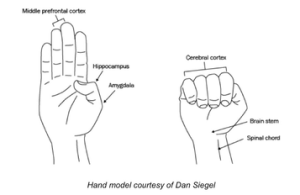When Thin is the Fashion Statement – Teens and Body Image
I was reading an article about this amazing “new” summer dress that was circulating on social media, you know the one with the strawberries?! Only to find out it wasn’t new at all as it had been worn by plus size model Tess Holliday at the beginning of 2020.
The dress had been mocked at the time and now is a big hit.
The primary difference: the body types wearing the dress!

Photo by Canva
I was struck by this realization although I know I have been seeing this socialization my whole life. It reminded me that when I was young, I really wanted to wear short shorts but when I did, I was always tugging at them and looking behind me to see if my cellulite was exposed. I have come a long way with body image and self-love.
The messages social media pumps out about style is that it is depends on your body type and not about what you love.
BUT IT DOESN’T have to end there.
I want to help you take those “I’m not (insert defeating adjective here- e.g. beautiful/curvy/thin/sexy/good) enough” thoughts and STOP letting them control your choices.
If you agonize over your clothes, skipping out on those pieces you would love to wear because you are afraid they won’t fit you, check out these 5 body image tips.

Photo by Drop the Label Movement on Unsplash
Find Positive Body Image Role Models
It can be your Mom, auntie, Bff’s Mom- anyone who is putting out the vibe of loving their body in its imperfect form.
Be critical of what you see in the media and find models and celebs that are similar to you.
Know Where to Get Information About Bodies and Body Changes
Talk to your trusted adults and ask questions. They have likely been asked by someone before.
Get your information from reputable sources such as teen talk, teens health and mindyourmind.

Photo by Annie Spratt on Unsplash
Take Social Media Breaks
Unplug, turn it off, step away, stop scrolling those feeds and let your eyes and brain take in other stimuli.
Get out for a walk, hang out with a good friend, immerse yourself in your life and the enjoyable moments.
Practice Body Acceptance
Notice what your body can do and how it can move. Whether it’s dancing, stretching, running, being still, etc.
Compliment yourself every single day about one quality (inner and outer) that makes you, You. So important to practice this every day.
List 3 things you like about your body and Check out this body image booster download
Practice Body Awareness
Notice which clothes feel good on your body. Tune in and take the time to stretch, breathe and ask yourself how your body is feeling in this moment.
Notice the messages you are saying to yourself about your body- how do they make you feel? If you were talking to a close friend would you say the same thing?

Photo by Gemma Chua-Tran on Unsplash
By following these tips and taking care of your body with what you put in it, how much you rest you get, and staying active every day, you will bring confidence, clarity, and strength to your life.
If you found this post helpful, pass it on by emailing a friend or sharing it on Twitter or Facebook- Thanks!
– Chantal Côté, R.Psych, Pyramid Psychology- helping older children, teens, and young adults learn how to build bulletproof mindsets

Chantal Côté (she/her) is a psychologist and teen life coach living in Calgary, Alberta. After over a decade in non-profit and community mental health, Chantal started Pyramid Psychology, a practice dedicated to supporting teens – a population she is constantly amazed by. Chantal is on a mission to help 100,000 teen girls (and their parents) build bulletproof mindsets so they can weather the ups and downs of life. As part of this goal, Chantal has had the privilege of speaking at various events – virtual and live – to support teens and parents.
Outside of this passion, Chantal is often in nature, writing poetry, playing ball hockey and hanging out with her loved ones.
Each week, Chantal writes a blog article in response to issues she hears from the parents and teens she connects with.
If you have something you’d like to read more on – email ideas and questions to info@pyramidpsychology.com or DM us via Instagram or Facebook.



















































